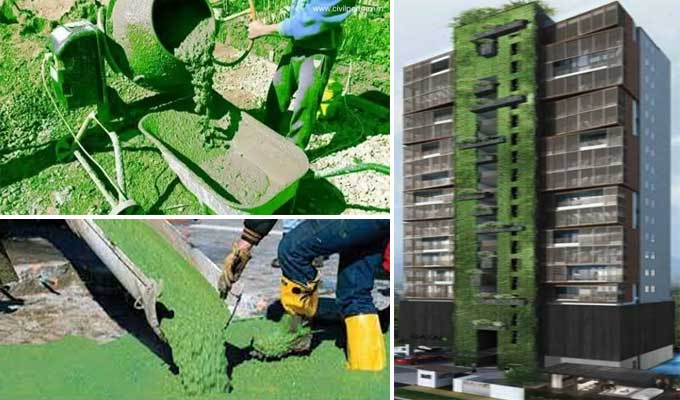
Green Concrete: the Concrete of the future
Construction relies heavily on concrete. Demolishing buildings causes a lot of building debris to accumulate, which is usually disposed of in low lying areas or wastelands, closing down natural water drains and rainwater storage areas.
Concrete that is environmentally friendly produces significantly less carbon dioxide than concrete that is not environmentally friendly. Environmentally friendly concrete includes green concrete.
Define Green Concrete
The eco-friendly concrete made from concrete waste is called green concrete. It provides a long life cycle with a low maintenance cost by providing an extra step in the mix design.
Besides being a good energy saver and wastewater resistor, green concrete also reduces CO2 emissions. As well as representing the color, green now also represents the environment in which we live.
Reason Behind of Using Green Concrete
Green concrete requires very little energy to produce compared to other concretes. The manufacturing of green concrete produces less carbon dioxide than other kinds of concrete, which is another reason for using it.
Additionally, green concrete reduces the environmental impact of construction by reducing CO2 emissions and energy consumption. As well as making the structure more economical, green concrete can use in construction.
Green concrete is often used in construction because homeowners want to create beautiful & modern buildings. We can reduce environmental pollution and sustainable development by using green concrete.
Green concrete is far more workable than conventional concrete. That is why construction workers utilize green concrete. Since green concrete is more fire- and thermal-resistant than traditional concrete, its use in construction is increasing daily.
Difference between Traditional Concrete & Green Concrete
Many recycling plants recycle demolished materials, making construction material, primarily coarse aggregate and sand, from demolished debris or waste ready mix materials and reusing them. The CO2 emissions of cement can also be reduced by using substitutes.
It may be referred to as Green Concrete when the concrete is made from recycled or waste a material or using substitute that has less impact on the environment. In addition to using environmentally friendly materials, green concrete is also made from recycled material from construction and demolition waste.
Environmentally friendly concrete, or green concrete, is made from concrete wastes. A green concrete is produced using less energy than conventional concrete.
Applications of Green Concrete
In addition to dams, bridges, and retaining walls, green concrete is used in many other projects as well. In addition to being used in building projects, green concrete also has another application. The use of green concrete in road construction has increased in recent years. One of the most prominent examples of green concrete is the Horse Dam in Hungary.
Merits of Green Concrete
- 30 percent reduction in CO2-emissions from the concrete industry.
- Waste products were used by the concrete industry at a rate of 20% more than before.
- Sustainable development without environmental pollution.
- The maintenance and repair costs of green concrete are lower.
- Compared to conventional concrete, green concrete is more workable.
- Thermo-resistance and fire resistance are good.
- It is similar to conventional concrete in terms of compression strength when green concrete is mixed with water cement ratio.
- Green concrete has almost identical flexural strength to conventional concrete.
Demerits of Green Concrete
- Green concrete has a lower flexural strength. Due to this, people use traditional concrete over green concrete although the reinforcement costs increase.
- The life of structures constructed with green concrete is comparatively shorter than structures constructed with conventional concrete.
- Green concrete has a lower split tension than conventional concrete.
- The absorption of water is high, contrary to conventional concrete, it has a high shrinkage and creep rate.
- Green concrete has almost identical flexural strength to conventional concrete.
Wrapping it Up
Green concrete can be produced using waste materials in significant ways. Concrete can be produced economically and environmentally-friendly by replacing regular concrete material with waste materials and by-products.
To get more details, watch the following video tutorial.
Video Source: The Structural World
By partially replacing cement and aggregate with waste material and admixtures, concrete can grow stronger in both compressive and tensile areas, have greater sulphate resistance, have a reduced permeability, and have improved workability.
There was a need for faster construction and quicker availability of materials in the construction industry. There is a big problem with making green concrete material available.


